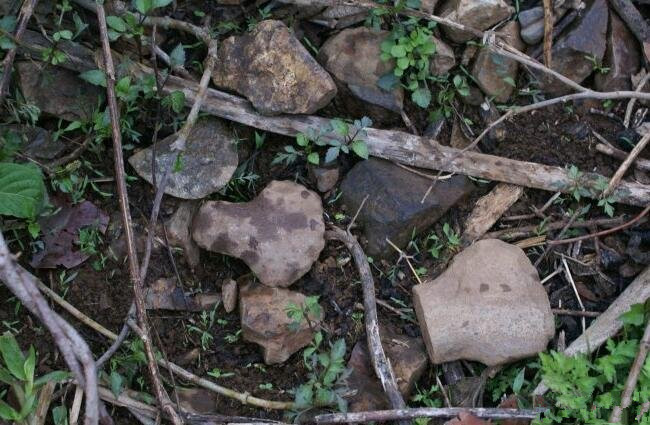
Manghuai Site of Neolithic Period in Yunxian County, Lincang
Overview
The Manghuai Site (忙怀新石器遗址) is a significant Neolithic archaeological site located approximately 40 kilometers east of Yunxian County (云县) in Lincang City (临沧市), Yunnan Province (云南省), specifically within Manghuai Township (忙怀乡). This site is situated in the mid-stream area of the Lancang River (澜沧江) and is distributed along the hillside where the Shundian River (顺甸河) intersects with the Lancang River. Not far from the site is the well-known Manwan Hydropower Station (曼湾电站).
Historical Significance
The Manghuai Neolithic cultural site primarily consists of two areas: the Old Foundation Site (旧地基遗址) and the Manggan Site (曼干遗址). These sites were named after their discovery in Manghuai, Yunxian. The Old Foundation Site is located about two kilometers from Manghuai Town (忙怀镇) in Yunxian.
In 1974, the Yunnan Provincial Museum (云南省博物馆) conducted excavations that revealed the presence of Neolithic cultural remains in the mid-stream region of the Lancang River, represented by Manghuai. This cultural type is newly identified in Yunnan Province and is characterized by shoulder stone axes (有肩石斧), also known as double-shoulder stone axes, stone shovels, and stone adzes.
The Old Foundation Site measures 130 meters in length and 120 meters in width, covering an area of approximately 15,600 square meters. Excavations revealed artifacts such as stone axes, stone net weights, molds, pottery shards, and stone anvils, with the stone tools predominantly made from pebbles. The pottery found at the site includes various jars, primarily made of gray and red clay, featuring decorations like plain surfaces, cord patterns, and nipple patterns.
Cultural Heritage
Located two kilometers from the Manghuai Township government, on the west bank of the Lancang River near the Luozha River (罗扎河), the site at Banpo (半坡) in Bangliu Village (邦六村) has also been identified as a Neolithic cultural site. This area, centered around Manghuai, is a typical representative of the Neolithic culture in the Lancang River basin. The “Manghuai Culture” is considered a cradle of human civilization, alongside the Yellow River (黄河) and Yangtze River (长江) basins in China.
In June 1974, excavations indicated that this area was home to human activity during the Neolithic period, approximately 4,000 years ago. Numerous double-shoulder stone axes, stone weights, and pottery shards were unearthed, showcasing the region’s rich cultural history.
Notable Discoveries
The Manghuai culture encompasses the Neolithic culture found in the Lancang River basin. Similar sites have been identified in other regions, such as the Mulu River (马鹿塘) between Dazhaoshan (大朝山) and the Lancang River, as well as the Baihu Village (百户寨) Neolithic site in Manwan Town (曼湾镇). In 1984, the Archaeological Institute discovered additional sites in the Manwan Hydropower Station’s submerged area, indicating the extensive reach of Neolithic settlements.
Moreover, in August 1998, archaeologists discovered another Neolithic site in Manggan Village (曼干村) along the Lancang River, further solidifying the region’s archaeological significance. Findings from various sites, including artifacts such as double-shoulder stone axes and net weights, have been confirmed as part of the “Manghuai Neolithic Culture,” establishing a new cultural type recognized by archaeologists.
How to Get There
By Car: From Lincang City, drive east toward Yunxian County, following signs to Manghuai Township. The site is approximately 40 kilometers from the county seat.
By Bus: Take a bus from Lincang to Yunxian County. Upon arrival, you may need to hire a taxi to reach Manghuai Township.
Travel Tips
- Best Time to Visit: Plan your visit during the dry season for easier access and better exploration conditions.
- Respect for Heritage: When visiting archaeological sites, maintain a respectful distance from excavated areas and refrain from touching artifacts.
- Local Guides: Consider hiring a local guide to enrich your understanding of the site’s history and cultural significance.
- Photography: Check for any restrictions on photography, especially in areas where cultural artifacts are present.


 7 Days GolfingTour
7 Days GolfingTour
 8 Days Group Tour
8 Days Group Tour
 8 Days Yunnan Tour
8 Days Yunnan Tour
 7 Days Shangri La Hiking
7 Days Shangri La Hiking
 11 Days Yunnan Tour
11 Days Yunnan Tour
 6 Days Yuanyang Terraces
6 Days Yuanyang Terraces
 11 Days Yunnan Tour
11 Days Yunnan Tour
 8 Days South Yunnan
8 Days South Yunnan
 7 Days Tea Tour
7 Days Tea Tour
 8 Days Muslim Tour
8 Days Muslim Tour
 12 Days Self-Driving
12 Days Self-Driving
 4 Days Haba Climbing
4 Days Haba Climbing
 Tiger Leaping Gorge
Tiger Leaping Gorge
 Stone Forest
Stone Forest
 Yunnan-Tibet
Yunnan-Tibet
 Hani Rice Terraces
Hani Rice Terraces
 Kunming
Kunming
 Lijiang
Lijiang
 Shangri-la
Shangri-la
 Dali
Dali
 XishuangBanna
XishuangBanna
 Honghe
Honghe
 Kunming
Kunming
 Lijiang
Lijiang
 Shangri-la
Shangri-la
 Yuanyang Rice Terraces
Yuanyang Rice Terraces
 Nujiang
Nujiang
 XishuangBanna
XishuangBanna
 Spring City Golf
Spring City Golf
 Snow Mountain Golf
Snow Mountain Golf
 Stone Mountain Golf
Stone Mountain Golf

















